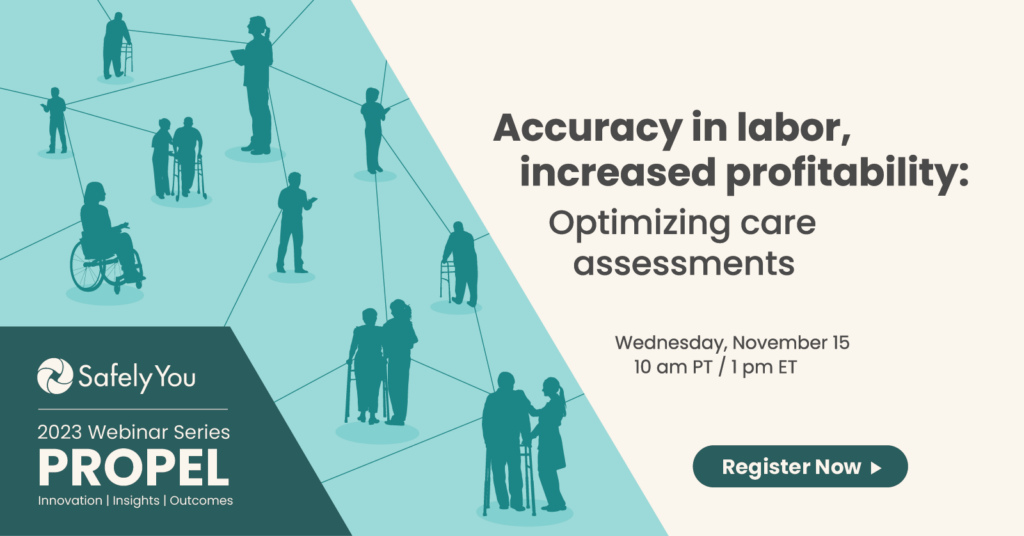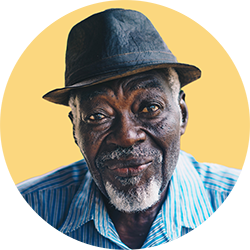Data shows that fall risk peaks between 6-9 pm and again from 3-6 am, when senior care staffing is reduced. What’s more, 50 percent of residents who fall overnight will have another overnight fall. These statistics become even more critical as they are applied to those living with Alzheimer’s and other forms of dementia—as the sun goes down, these residents are at even greater risk for falls as they experience sundowning, increased restlessness, anxiety, and disorientation—all of which can become more intense as the diseases progress.
Staffing shortages and burnout are posing an added risk for nighttime fall rates. According to a recent study by SafelyYou, nearly half (46 percent) of staff at senior living communities report that labor is a top challenge and 66 percent say these labor issues are leading to decreased quality of care. In fact, 85 percent of senior care executives found that falls significantly impact staff turnover. Given these combined issues, it has become critical for senior care providers to learn why falls are happening among their residents and how to prevent them.
Here are four ways senior care executives, nursing staff, and caregivers, can reduce fall risk for residents during the most vulnerable hours.
1. Incorporate technology to ease the burden on residents, families, and communities.
When the risk of falls increases during nighttime hours, the risk of ER visits increases as well. ER visits are not only feared for the resident’s sake, as they may become exposed to new illnesses, they are costly and anxiety-inducing for the families and care communities as well. Nighttime falls also require the added attention of multiple caregivers, adding to the staff’s workload and decreasing their ability to attend to other residents.
In 2022, nearly all senior care providers—93 percent—said in a SafelyYou survey that the right technology can significantly help prevent falls. Monitoring and notification systems are helping staff attend to resident needs nearly immediately. Artificial intelligence-enabled video technologies are decreasing resident falls by 40 percent and ER visits by 80 percent for some communities. Even more, adding technology that increases staff visibility and insight allows care communities to have straightforward and intelligent conversations with resident families around individual needs, such as: how their loved ones are sleeping, their comfort at nights, what is causing them to wake up, safety concerns in the bedroom, and possible improvements to the situation. Families are becoming increasingly more aware of these technologies (and requesting them), as they want to understand their loved ones’ individual needs and keep them safe.
By employing the right technology and significantly reducing falls, senior living communities could better support their staff, improve length of stay for residents, support resident families with clear insight and visibility, and cut on significant costs related to falls (estimated at $5,000 per resident fall with an injury).
2. Know individual dementia behavior expressions and how they affect sleep.
Everything from fatigue and hunger to pain, boredom, or depression can affect an individual’s sleep patterns. As simple as this sounds, making sure residents are surrounded by familiar objects and photos, and that they have ample opportunities for social engagement, can ward off restlessness and agitation that lead to increased falls as the sun goes down. Avoiding caffeine use and reducing stimulation at least 30 minutes before bed can also go a long way in ensuring proper sleep hygiene and fewer nighttime falls.
Even more, caregiver routines play a large role on residents’ sleep patterns and should be evaluated and discussed regularly. Pay attention to typical routines that could cause sleep disturbances, including the amount of time a resident is in bed during the day and night and patterns of interrupted sleep due to care cycles. As caregivers evaluate these practices, they should make necessary adjustments on an individual, case-by-case basis—as opposed to a one-size-fits-all approach for the community.
3. Consider the sleep environment and potential interventions.
There are several ways an environment can negatively affect an individual’s risk of falls at nighttime. With decreased light exposure and increased shadows, poor visibility can become a driver of falls. What’s more, any unfamiliarity with the environment can also make it easier for residents to become disoriented and fall.
Paying close attention to the environment is an important way to prevent falls. Is the resident continually waking up to check the thermostat because their room is too hot or too cold? Or does the resident regularly fall asleep with the lamp on, then wake hours later and attempt to turn it off during the night? Making small environmental changes, like installing amber lights in the room or reducing hallway light and noise can go a long way in preventing nighttime falls for those with Alzheimer’s and dementia.
4. Be aware of disruptions to circadian rhythm.
Disruption to circadian rhythm is often present even in preclinical stages of Alzheimer’s Disease. As many as 60-70 percent of individuals with dementia have sleep disturbances as melatonin production decreases and they experience increased wakeful periods at night.
There are several ways to counteract these disruptions to circadian rhythm. One simple way is to make sure residents are having enough exposure to natural light and ample opportunity to get outdoors for exercise. Using a light box can also help residents realign their natural sleep-wake patterns.
Preventing falls day or night is not a one-pronged solution. Fall prevention requires significant attention by care executives, quick and effective communication among nursing staff, and the support from families of residents as well. Understanding the risks and the solutions to prevent falls will not only help reduce falls among residents, but also provide the necessary support caregivers and nursing staff require.





